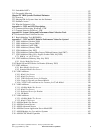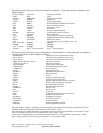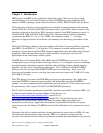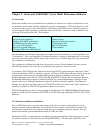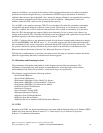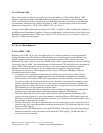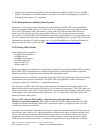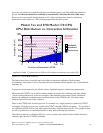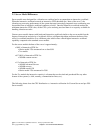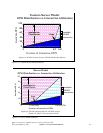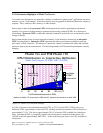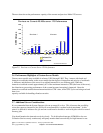
2.1.4 V5R2 and V5R1
There were several new iSeries 8xx and 270 server model additions in V5R1 and the i890 in V5R2.
However, with the exception of the DSD models, the underlying server behavior did not change from
V4R5. All 27x and 8xx models, including the new i890 utilize the same server behavior algorithm that
was announced with the first 8xx models supported by V4R5. For more details on these new models,
please refer to Appendix C, “CPW, CIW and MCU Values for iSeries”.
Five new iSeries DSD models were introduced with V5R1. In addition, V5R1 expanded the capability of
the DSD models with enhanced support of Domino-complementary workloads such as Java Servlets and
WebSphere Application Server. Please refer to Section 2.13, Dedicated Server for Domino Performance
Behavior, for additional information.
2.2 Server Model Behavior
2.2.1 In V4R5 - V5R2
Beginning with V4R5, all 2xx, 8xx and SBx model servers utilize an enhanced server algorithm that
manages the interactive CPU utilization. This enhanced server algorithm may provide significant user
benefit. On prior models, when interactive users exceed the interactive CPW capacity of a system,
additional CPU usage visible in one or more CFINT tasks, reduces system capacity for all users including
client/server. New in V4R5, the system attempts to hold interactive CPU utilization below the threshold
where CFINT CPU usage begins to increase. Only in cases where interactive demand exceeds the
limitations of the interactive capacity for an extended time (for example: from long-running,
CPU-intensive transactions), will overhead be visable via the CFINT tasks. Highlights of this new
algorithm include the following:
y As interactive users exceed the installed interactive CPW capacity, the response times of those
applications may significantly lengthen and the system will attempt to manage these interactive
excesses below a level where CFINT CPU usage begins to increase. Generally, increased CFINT
may still occur but only for transient periods of time. Therefore, there should be remaining system
capacity available for non-interactive users of the system even though the interactive capacity has
been exceeded. It is still a good practice to keep interactive system use below the system interactive
CPW threshold to avoid long interactive response times.
y Client/server users should be able to utilize most of the remaining system capacity even though the
interactive users have temporarily exceeded the maximum interactive CPW capacity.
y The iSeries Dedicated Server for Domino models behave similarly when the Non Domino CPW
capacity has been exceeded (i.e. the system attempts to hold Non Domino CPW capacity below the
threshold where CFINT overhead is normally activated). Thus, Domino users should be able to run in
the remaining system capacity available.
y With the advent of the new server algorithm, there is not a concept known as the interactive knee or
interactive cap. The system just attempts to manage the interactive CPU utilization to the level of the
interactive CPW capacity.
y Dynamic priority adjustment (system value QDYNPTYADJ) will not have any effect managing the
interactive workloads as they exceed the system interactive CPW capacity. On the other hand, it
won’t hurt to have it activated.
IBM i 6.1 Performance Capabilities Reference - January/April/October 2008
© Copyright IBM Corp. 2008 Chapter 2 - Server Performance Behavior 17



